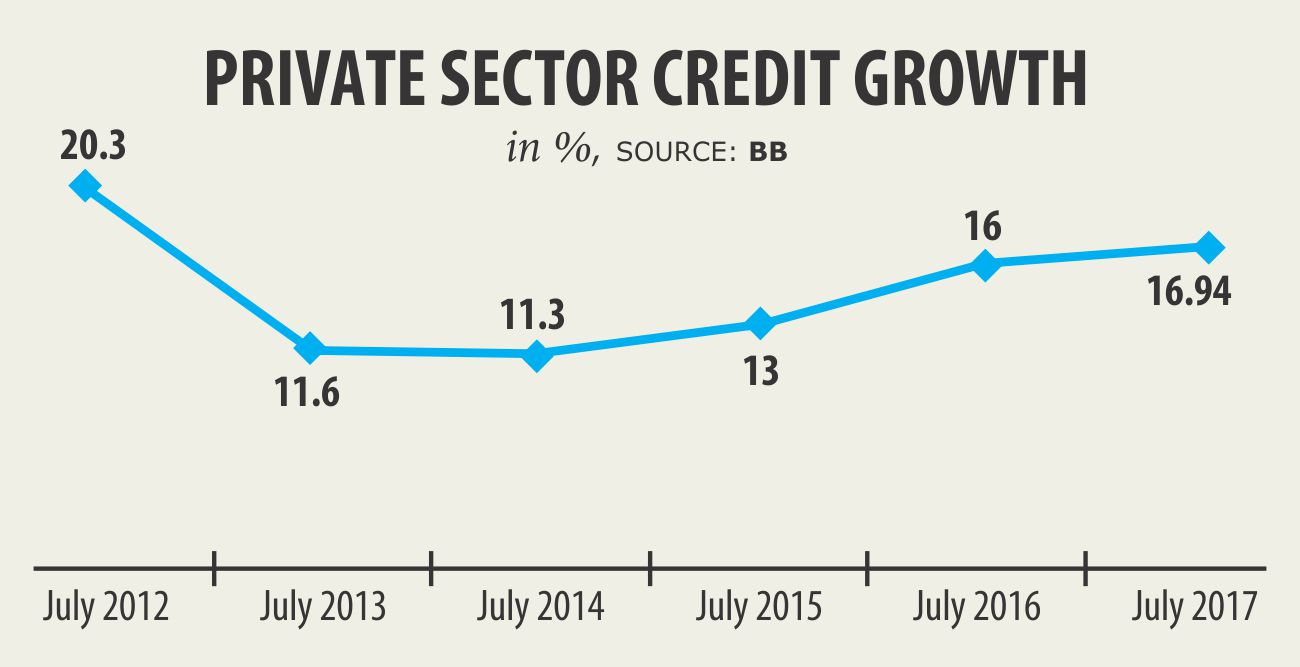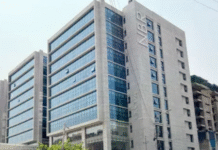Private sector credit growth in July stood at 16.94 percent — the highest in five years and well above the target of 16.2 percent set in the monetary policy for the first half of the fiscal year.
The development is all the more salient as the private sector credit growth was 15.66 percent only a month earlier — far below from the monetary target of 16.5 percent.
This had compelled the Bangla-desh Bank to slash private sector credit target for the first half of fiscal 2017-18 to 16.20 percent from 16.50 percent.
The last time the private sector credit growth was as high as in July was way back in November 2012, when it stood at 17.2 percent. After that, it has been on a decline, according to data from the Bangladesh Bank.
Bankers attributed the spike to the declining interest rates and rising demand for loans.

There was a significant rise in import payments in July, said MA Halim Chowdhury, managing director of Pubali Bank, the largest private bank in terms of branch network.
Import payment by way of LC settlement surged 23 percent year-on-year to $4.5 billion in July, central bank data shows. A month earlier, the amount was $3.41 billion.
“Also, the demand for loan has increased in recent months,” Chowdhury said, adding that contractors of government-sponsored development works are also taking on loans from banks.
At the end of July, total outstanding loans stood at Tk 778,000 crore in contrast to Tk 665,300 crore a year earlier.
The central bank though is not buoyant after July’s private sector credit growth figure.
“It is just one month. It does not give the full picture,” said a senior economist of the BB.
The growth picked up in July because the lending activities were muted in June due to extended bank holidays during the month, he said.
He foresees the private sector credit growth to remain within 16.2 percent in the first half of the fiscal year 2017-18.
Anis A Khan, managing director of Mutual Trust Bank, agrees with the BB economist about the spike in July.
“It could be a seasonal effect,” he said, adding that the average is still lacklustre.
If the average private sector credit growth remains at 16 percent, it will be fine for the banking industry, he added.
The private sector credit growth went above 20 percent in 2012, when banks were lending aggressively. The average lending rate was above 14 percent in 2012.
Credit growth started declining in 2013 amid rising political violence centring on the national election scheduled for January 5, 2014.
Since then, credit growth has been in constant descent and stood at 11 percent at the end of the year, according to central bank data.
Private sector credit growth hovered between 11 and 12 percent during 2014.
The banking sector experienced a slump in credit demand until 2015, registering 13 percent growth.
The loan demand started to rise from the beginning of 2016 riding on business expansion activities brought about by political calm and downturn in lending rates.
Credit growth remained above 15 percent throughout 2016, when lending rate was 10 to 11 percent.
The lending rate in the banking sector came down to 9.56 percent in June this year, making credit affordable to borrowers.
Though private sector saw remarkable credit growth, public sector borrowing remained 15.32 percent in the negative against the monetary target of 3.80 percent.
Source: The Daily Star









